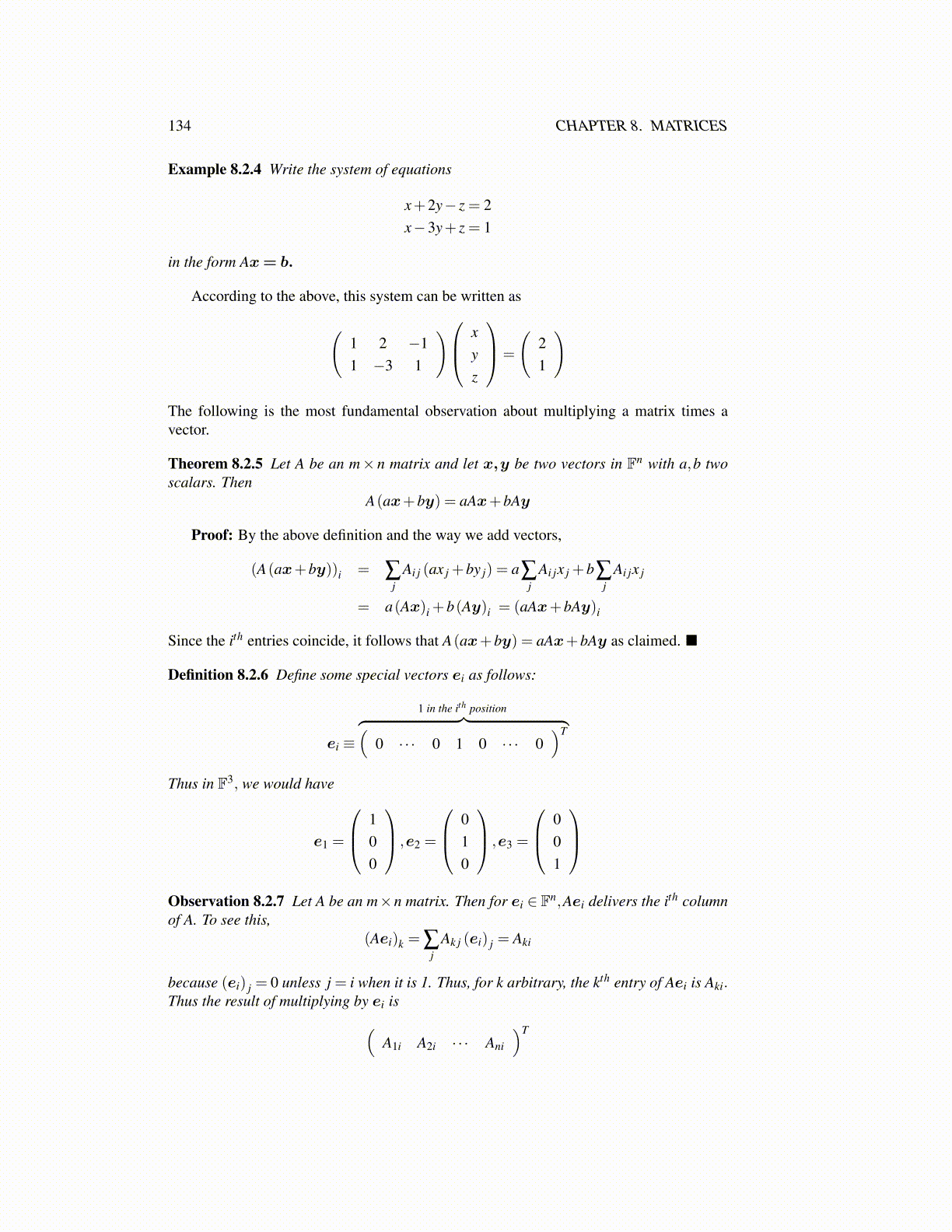
134 CHAPTER 8. MATRICES
Example 8.2.4 Write the system of equations
x+2y− z = 2x−3y+ z = 1
in the form Ax= b.
According to the above, this system can be written as
(1 2 −11 −3 1
) xyz
=
(21
)
The following is the most fundamental observation about multiplying a matrix times avector.
Theorem 8.2.5 Let A be an m× n matrix and let x,y be two vectors in Fn with a,b twoscalars. Then
A(ax+by) = aAx+bAy
Proof: By the above definition and the way we add vectors,
(A(ax+by))i = ∑j
Ai j (ax j +by j) = a∑j
Ai jx j +b∑j
Ai jx j
= a(Ax)i +b(Ay)i = (aAx+bAy)i
Since the ith entries coincide, it follows that A(ax+by) = aAx+bAy as claimed. ■
Definition 8.2.6 Define some special vectors ei as follows:
ei ≡
1 in the ith position︷ ︸︸ ︷(0 · · · 0 1 0 · · · 0
)T
Thus in F3, we would have
e1 =
100
,e2 =
010
,e3 =
001
Observation 8.2.7 Let A be an m×n matrix. Then for ei ∈ Fn,Aei delivers the ith columnof A. To see this,
(Aei)k = ∑j
Ak j (ei) j = Aki
because (ei) j = 0 unless j = i when it is 1. Thus, for k arbitrary, the kth entry of Aei is Aki.Thus the result of multiplying by ei is(
A1i A2i · · · Ani
)T